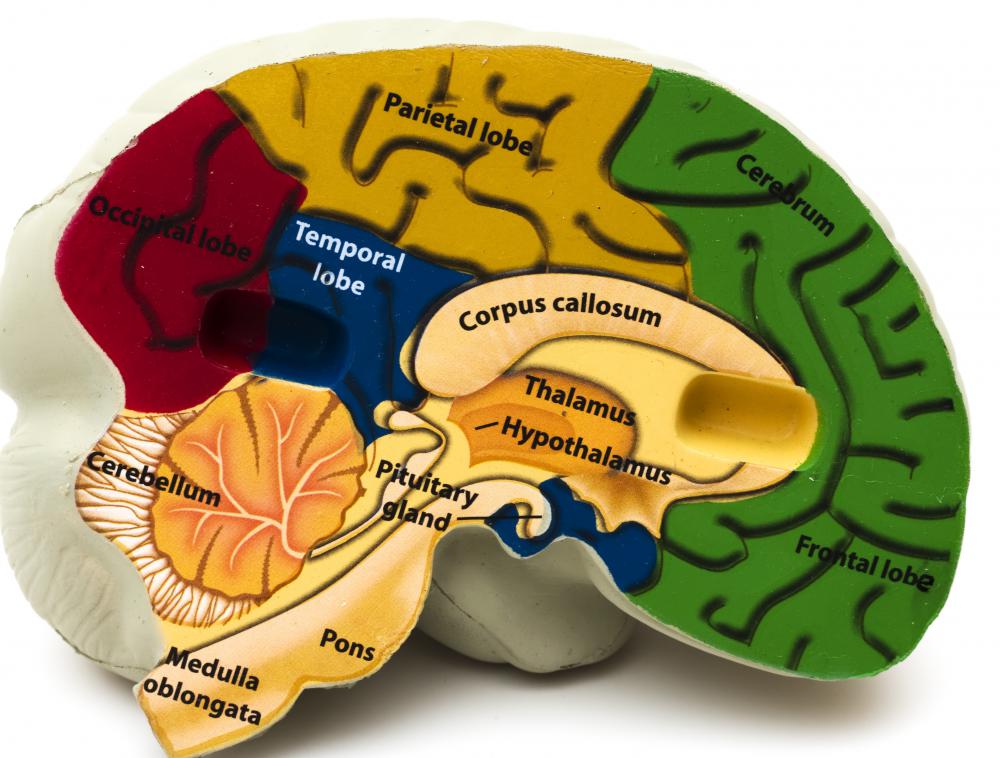At TheHealthBoard, we're committed to delivering accurate, trustworthy information. Our expert-authored content is rigorously fact-checked and sourced from credible authorities. Discover how we uphold the highest standards in providing you with reliable knowledge.
What Is LH-FSH Ratio?
LH-FSH ratio refers to the relative values of two gonadotropin hormones produced by the pituitary gland in women. Luteinizing hormone (LH) and follicle stimulating hormone (FSH) stimulate ovulation by working in different ways. In pre-menopausal women, the normal ratio is 1:1 as measured on day three of the menstrual cycle. Variations from this ratio can be used to diagnose polycystic ovarian syndrome (PCOS) or other disorders, explain infertility, or verify that a woman has entered menopause.
Levels of LH and FSH vary during the course of a woman’s normal menstrual cycle, and these hormones continue to be produced throughout her life. FSH stimulates the ovarian follicle to mature, then a large surge of LH stimulates the follicle to release an egg for fertilization. Other hormones released through this process cause levels of LH and FSH to fall again, only to be repeated at the next menstrual cycle. If the ovaries are not working properly, LH and FSH are still released as long as the pituitary gland is healthy, but levels do not drop again, causing high levels of one or both hormones.

The most common reasons for measuring this ratio are to diagnose PCOS, infertility, and menopause. Less commonly, abnormal levels can indicate a malfunctioning pituitary or hypothalamus. It’s important to note that an elevated LH-FSH ratio can happen for many different reasons, and a healthcare professional will look not only at the ratio, but the levels of each hormone individually and use a variety of other information to come to a diagnosis.

It used to be believed that an elevated LH-FSH ratio of greater than 2:1 or 3:1 was indicative of PCOS, but recently, researchers have discovered that many women with PCOS have normal levels. As many as half of all women with PCOS may not have high ratios, so levels are now an indicator that more testing is needed rather than a conclusive diagnostic tool.

High levels of FSH can indicate primary ovarian failure, meaning that there is a problem with the ovaries that prevents them from producing eggs. It can be reassuring to know that only about 10% of women who aren’t ovulating are experiencing ovarian failure. Low levels of FSH coupled with anovulation can indicate secondary ovarian failure. This simply means that the ovaries are not producing eggs because of a problem with the pituitary gland, not because of a problem with the ovaries themselves. Depending on the reason for ovarian failure, drugs can be prescribed in some cases to stimulate ovulation and increase fertility.

About five to six years before menopause, FSH levels will increase. LH will begin to increase three to four years before menopause. Although the LH-FSH ratio itself is less important than overall levels of each hormone individually, this measurement can be a reliable indicator of whether a woman has entered menopause and, if not, how close she is.
AS FEATURED ON:
AS FEATURED ON:















Discuss this Article
Post your comments